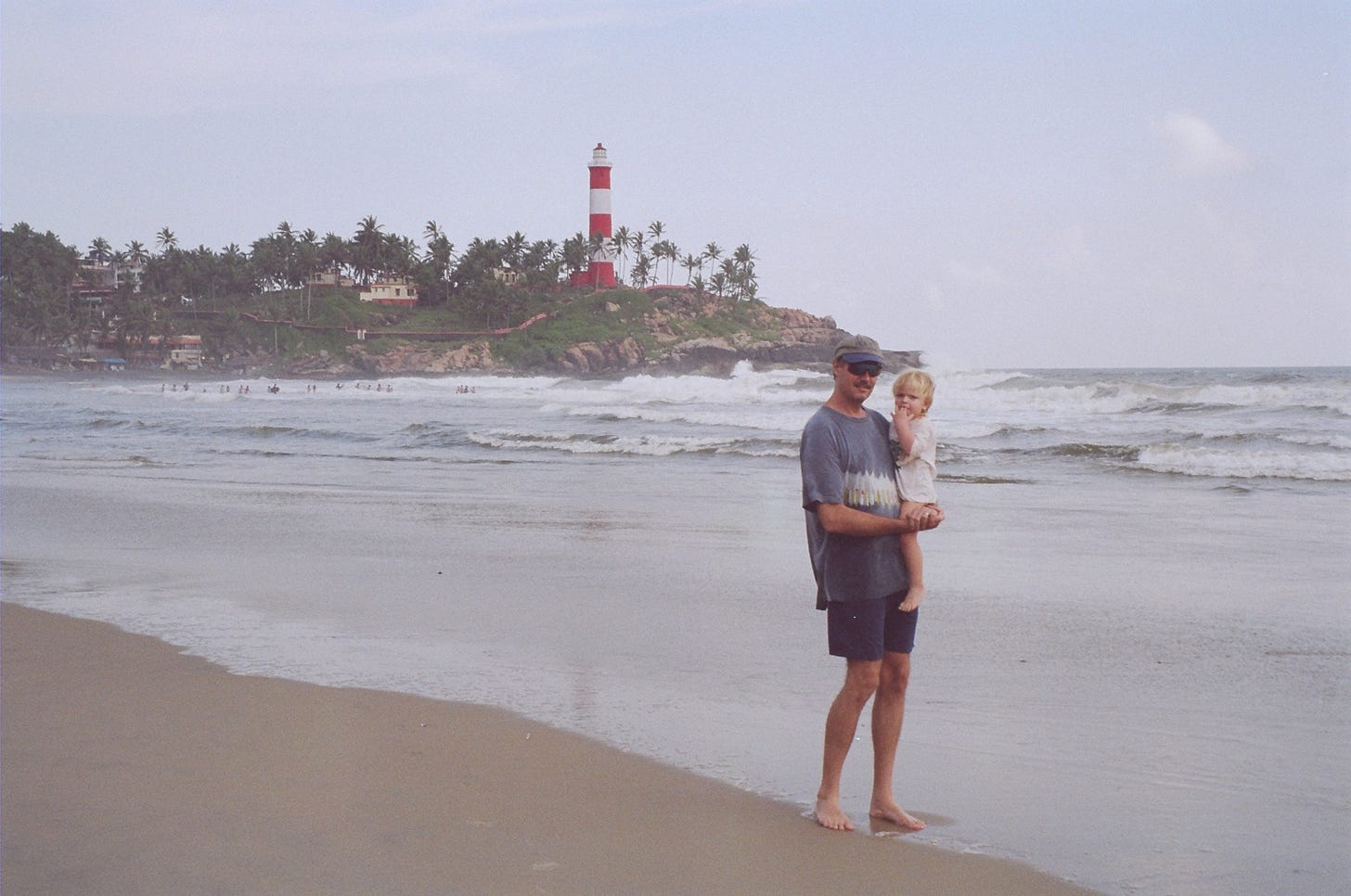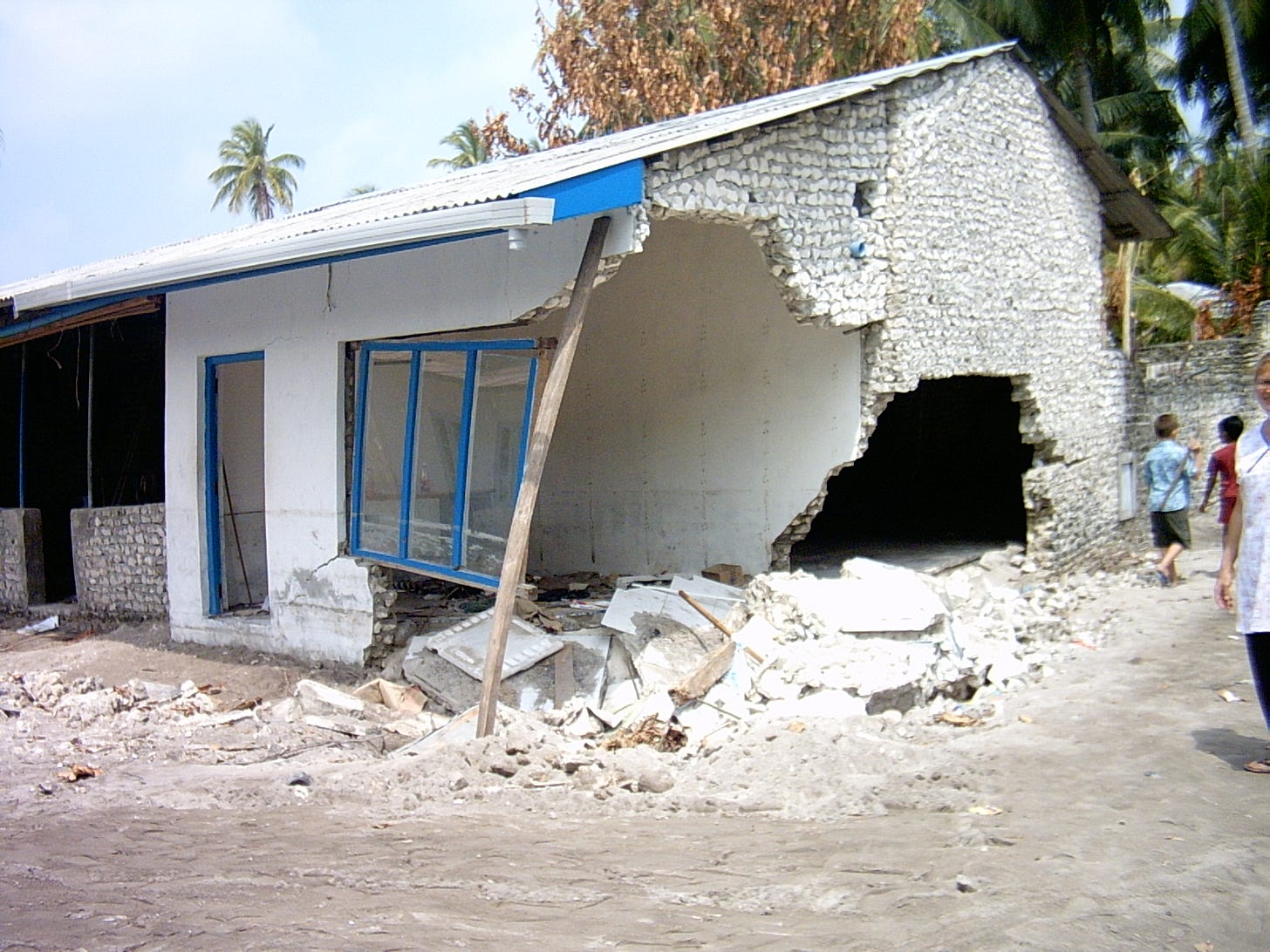The events of the Boxing Day tsunami in 2004 were devastating across the region and even at many sites where we were working at in southern India. We moved to India in 1999 living in Thiruvananthapuram, Kerala. There was much money flowing into the area from churches and other international organizations. We benefitted from some church funding to develop a bigger marine research team that could look into the impacts of the tsunami on the Indian underwater coastline and its possible effects on fishing communities. This funded another trip up to Goa where several young Indian scientists were trained to dive and eventually to do underwater research. Several now continue to do excellent research at universities and research institutions in India. Goa was almost as different a country to these young men as it would have been to travel overseas. They grew up in small towns in very conservative, rural Tamil Nadu and had not traveled much within India. Seeing Indian women ride motorcycles and the changes in food and behavior that is one of the legacies of both extensive tourism and the Portuguese in Goa was at times jarring. It is often good to remember that just because someone has the same passport as you do, they may be as different culturally as someone from a far distant country or perhaps even more different.
Our family was on the beach on Christmas Day 2004 playing in areas that would be slammed with refractive waves from the Boxing Day tsunami which started in Sumatra. We often went to Kovalam Beach which was about a half hour from our home. This was a place that had been the center of the hippie travel movement in the 70s, so I am told, and many beachside small restaurants had sprung up that still had some degree of foreign tourism, but which mainly now brought Indian tourists. It did seem that they all came to watch our kids play on the beach! We often on a weekend might have a gaggle of tourists taking pictures of our kids playing in the titanium-laced dark sand. There was a Swiss Bakery that had a more Western-style breakfast and Saturday mornings we were often found there enjoying fusion food unavailable in the city. We woke up the next morning to the news that the tsunami had caused extensive damage across the Indian Ocean. I had been scheduled to be underwater the next day and our research trip was promptly canceled.
A tsunami is a huge propagating wave of energy flowing through seawater which reacts differently depending on the geography of a specific location. So, if you were on a boat in the middle of the ocean a huge tsunami wave might feel like a gentle ripple in the water raising and lowering the boat. The Maldives are a bit like a comb in the middle of the ocean in the sense that the islands have developed around an old volcanic ridge and stick up from the bottom of the ocean like comb tines. The wave went through the country never reaching more than a meter or two in height, but since most of the country is less than 2 meters above sea level, there was a time when most of the country was underwater as a strong wave and water ran through villages. There were in fact divers in the water at the time and they reported strange currents, but no deaths or impact to them. The water simply flowed through the country. Maldivians that died were often the old, infirm, or babies that couldn't hold on to a tree and resist the water flow. However, when the wave hits a continental shelf, it is basically like a ramp letting the wave energy build into a massive wave. The southeast coast of India was hit directly, and many places were destroyed. The wave energy refracted around the southern tip and many westward-facing beach communities were also destroyed, particularly if they were in lower-lying areas. Kovalam beach has quite a steep slope so the wave did some damage and would have swept us out to sea had we been on the beach that day but didn't have the extensive damage like other locations. We waited with our Maldivian friends to hear news of family and friends in the country and over the next several days mourned with many as almost everyone knew at least one person killed, despite the low total number, such are the connections within that country.
Little did we know that the next year would bring an unexpected trip to a culturally Maldivian island that had been a part of India for many years.





